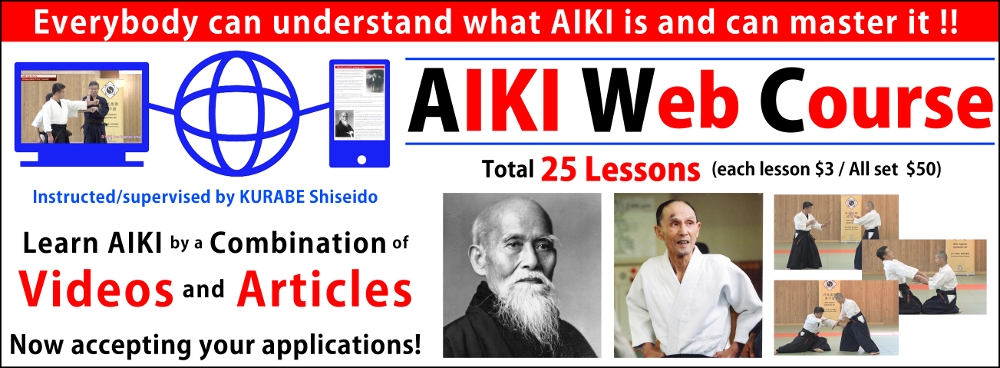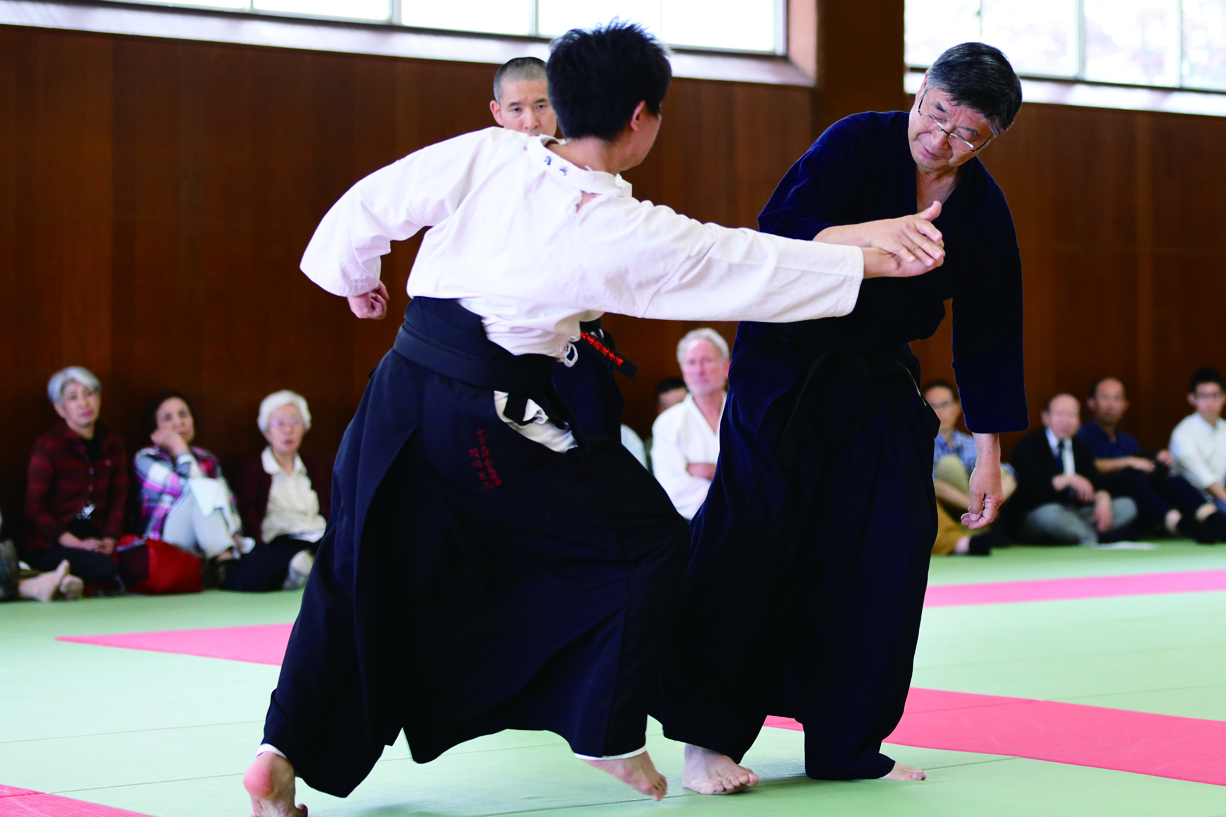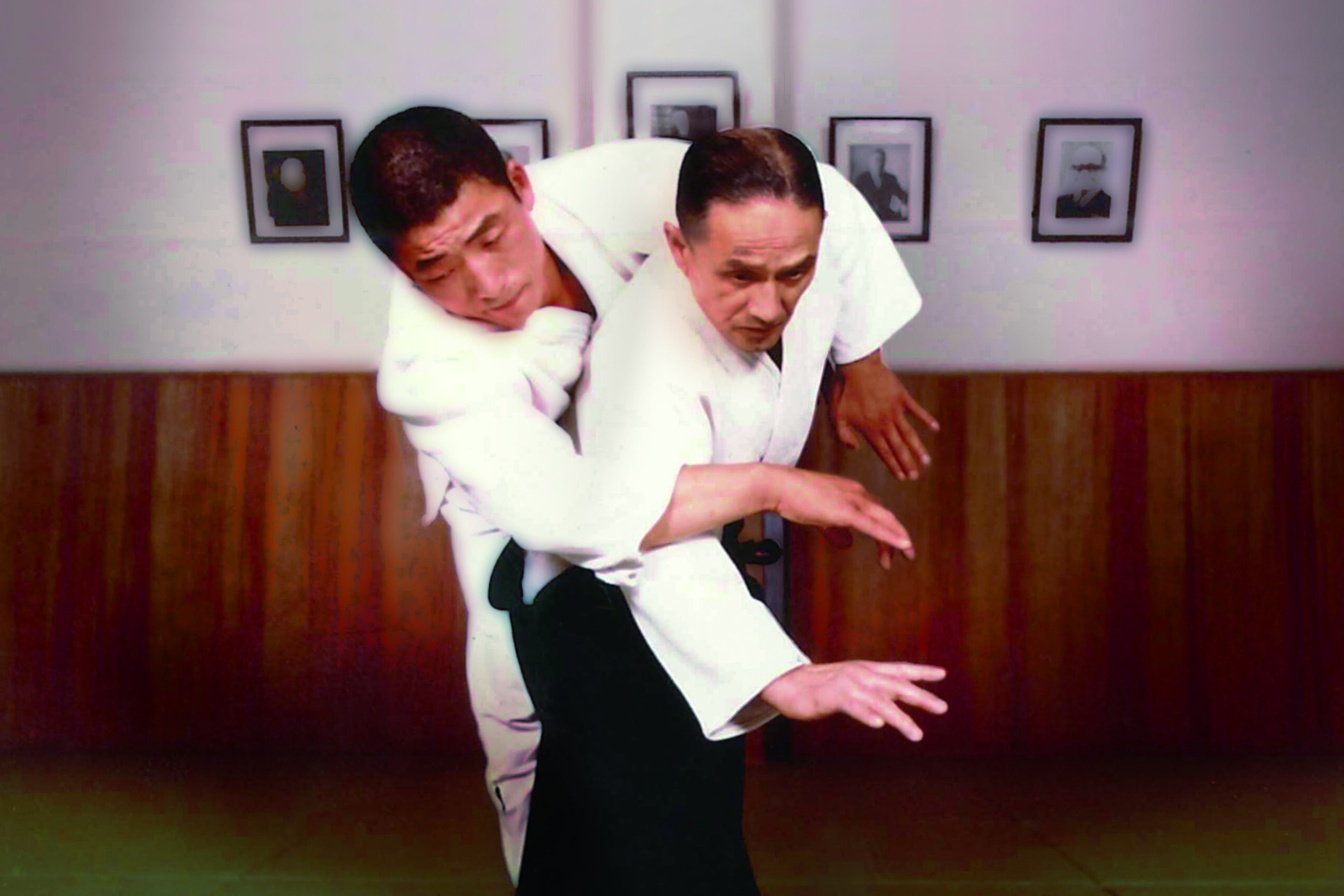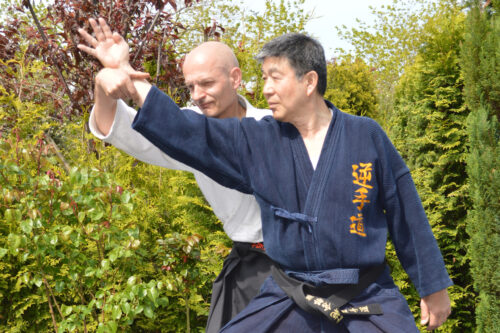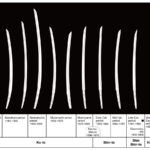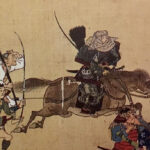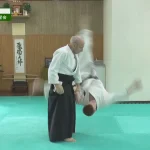» At the starting of AIKI Web Course
【AIKI JUJUTSU GYAKUTE-DO Series No.1】About GYAKUTE-DO and the digest of its basic techniques
1. About AIKI JUJUTSU GYAKUTE-DO
Gyakute-do was founded by Tadashi CHUSHUDO TANAKA-sensei who had mastered KARATE and KORYU JUJUTSU. Then under an influence from HAKKO-RYU JUJUTSU, which he also mastered, he established a new style with a unique focus on Gyakute Jutsu and named it Goshin Bugei (Self defence martial arts) Gyakute-do. It was in the early 1970s.
In the middle of 1990’s the founder TANAKA-sensei passed and no successor was designated to continue leading Gyakute-do. In Japan, the short life of this unique style drew to a close. When I was informed of TANAKA-sensei’s passing and the absence of a successor, I decided to preserve and develop Gyakute-do in Europe. Since then, I have put forth my best efforts to keep Gyakute-do alive, and after 20 years, Gyakute-do has been found a strong base in Europe. Later, I developed Aiki Jutsu by myself and, with the addition of my original Aiki system, I established Gyakute-do as an Aiki Jujutsu which is consist of 6 components — NUKI (release), NAGE (throw), RENKO (arrest), FUDO (control), Daken(hit ad kick) and Aiki.

2. Characteristics of Gyakute-do
Gyakute-do is an unique system specializing in Gyakute Waza, or wrist/arm joint lock techniques. Everyone who read this book will notice that most of the techniques are based on wrist/arm joint locks. Gyakute-do uses the method of most effective lever theory which requires little power to defeat the enemy. The wrists and arms are properly weak joints, where “proper” means the most effective to control others without causing too serious damage, but requiring minimal strength. The weakest joints are in the fingers, but they are too weak and risky. The finger bones break too easily and are not an ideal way for controlling others.
By applying locks to wrist and arm joints, one can throw or control the attacker with less power than other similar martial arts such as Judo. If such a joint lock works successfully, the attacker has no choice but to throw himself. That is the only way to escape from the intense pain, otherwise, the joint might break.
Gyakute-do techniques are neither as sophisticated nor beautiful as its brother Jujutsu style, Aiki-do, which also specializes in Gyakute techniques, especially Kote Kaeshi, Gyakute-do techniques are still wild, and carry the essence of feudal-era fighting systems. It consists of both Hitting and Kicking, and normal Jujutsu techniques like Nuki (release), Renko (arrest), Nage (throw), Fudo (control), and Aiki techniques, which makes the style a complete fighting system.
That being the case, people from every style of martial arts, such as Karate and Judo, can master Gyakute-do techniques smoothly. Plus, every martial artist can compensate for aspects missing from their style by learning Gyakute-do.
Additionally, the most significant and unique feature of Aiki Jujutsu Gyakute-do is that it has an Aiki system. The Aiki system of Gyakute-do is quite unique from the other Jujutsu styles which have Aiki system in it.
In Gyakute-do, every Aiki techniques are explained clearly by each logical methods, not by such abstract and difficult way to use the word “Ki”, spirits. So even a beginner can easily start mastering Aiki in Gyakute-do Aiki system. It does not require years to start master Aiki like many of or most of the other Aiki schools in Japan.

Controlling by Gyakute
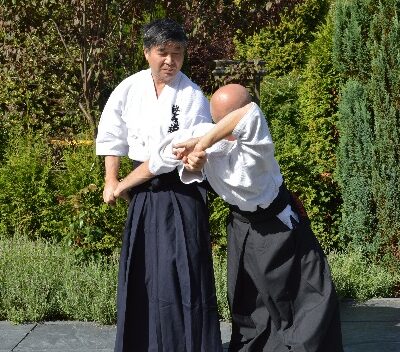
Another controlling by Gyakute
3. Basic Techniques
Hereby the excerpts of basic techniques are shown below.
3-1 KAMAE (positioning)
A. KIHON TACHI (basic standing stance)
B. SHOMEN TACHI (front stance)
from KIHON TACHI to SHOMEN TACHI
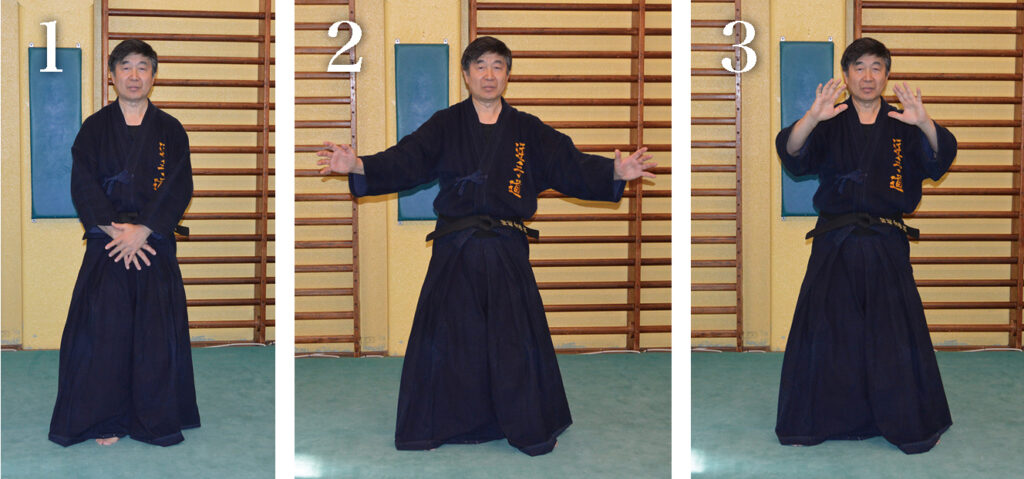
closed feet stance ——> open feet with shoulder width stance
C. MIGI HANMI
D. HIDARI HANMI
E. ZAI (seated position)
from KIHON TACHI A to ZAI E

3-2 UKEMI
3-2-1 HIRA UKEMI … similar to Judo

Should turn backward so that you can face to the opponent (①〜②). Then turn backward (③〜④).
3-2-2 KAITEN (rotating) UKEMI

3-2-3 RENZOKU (continuing) KAITEN (rotating) UKEMI
Hitting and kicking techniques
3-3-1 How to practice
These basic techniques should be practiced as a preparation exercise before every KATA training session. The first 10 times should be done slowly so that everybody can follow the correct motion of the instructor. Then the next 10 times should be performed quickly, as you would do in a real situation. This makes one set. In training, you always start a hitting/kicking sequence with the left hand/leg.
(1) JYODAN TSUKI (upper strike or punch)
KAMAE (positioning): SHOMEN TACHI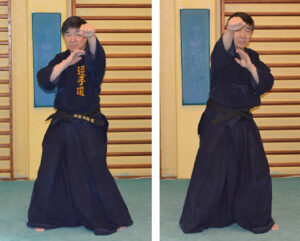
3-3-2 Practice Always guard your chin.
(2) CHUDAN TSUKI (middle strike or punch)
KAMAE (positioning): SHOMEN TACHI

In JUJUTSU, MAAI (combative distance) is closer than KARATE, so we hit in this way but not in KARATE’s way.
(3) KASUMI KAKE
KAMAE (positioning): SHOMEN TACHI

Do not hit but slap the other’s eye (eyes) with the fingers
(4) JYODAN UKE (upper block) by KAMAE (positioning): SHOUMEN TACHI

(5) SHUTO ATE by KAMAE (positioning): SHOMEN TACHI
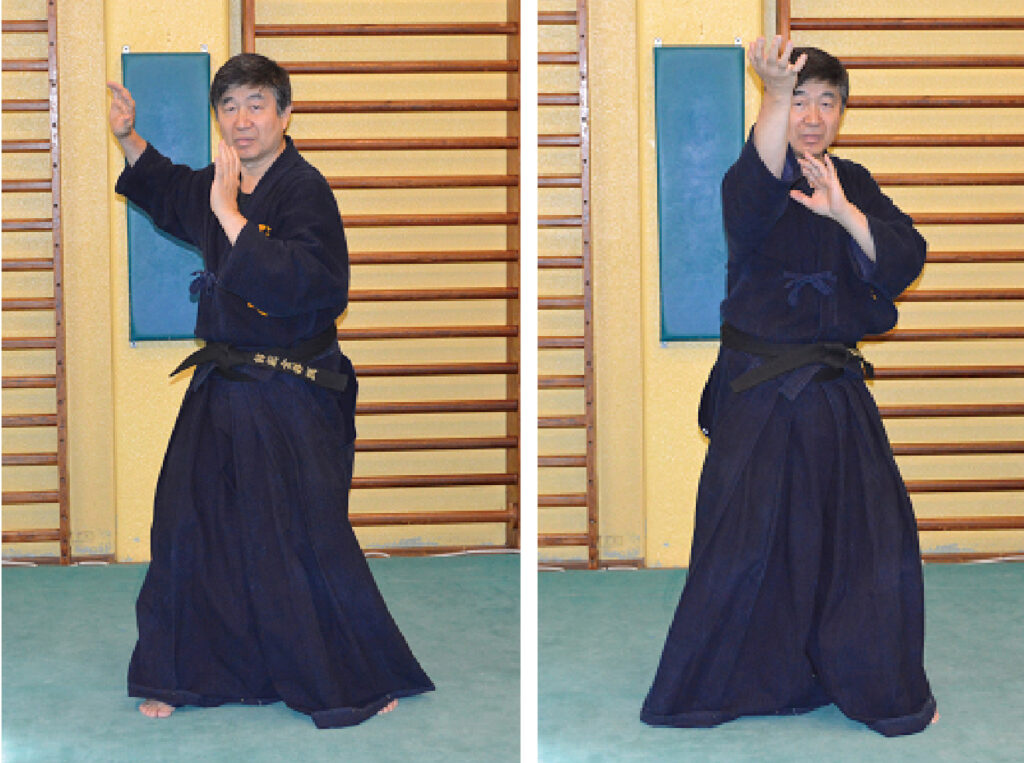
(6) SUIHEI UCHI by KAMAE (positioning): SHOUMEN TACHI
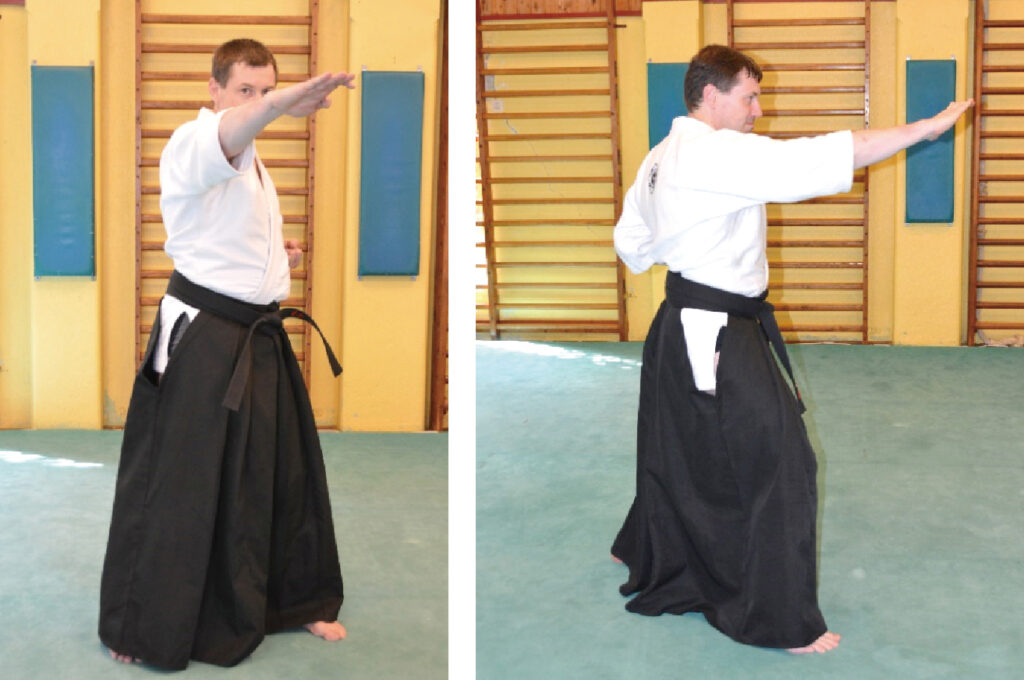
(7) CHUDAN SHUTO UCHI UKE
KAMAE (positioning): SHOMEN TACHI
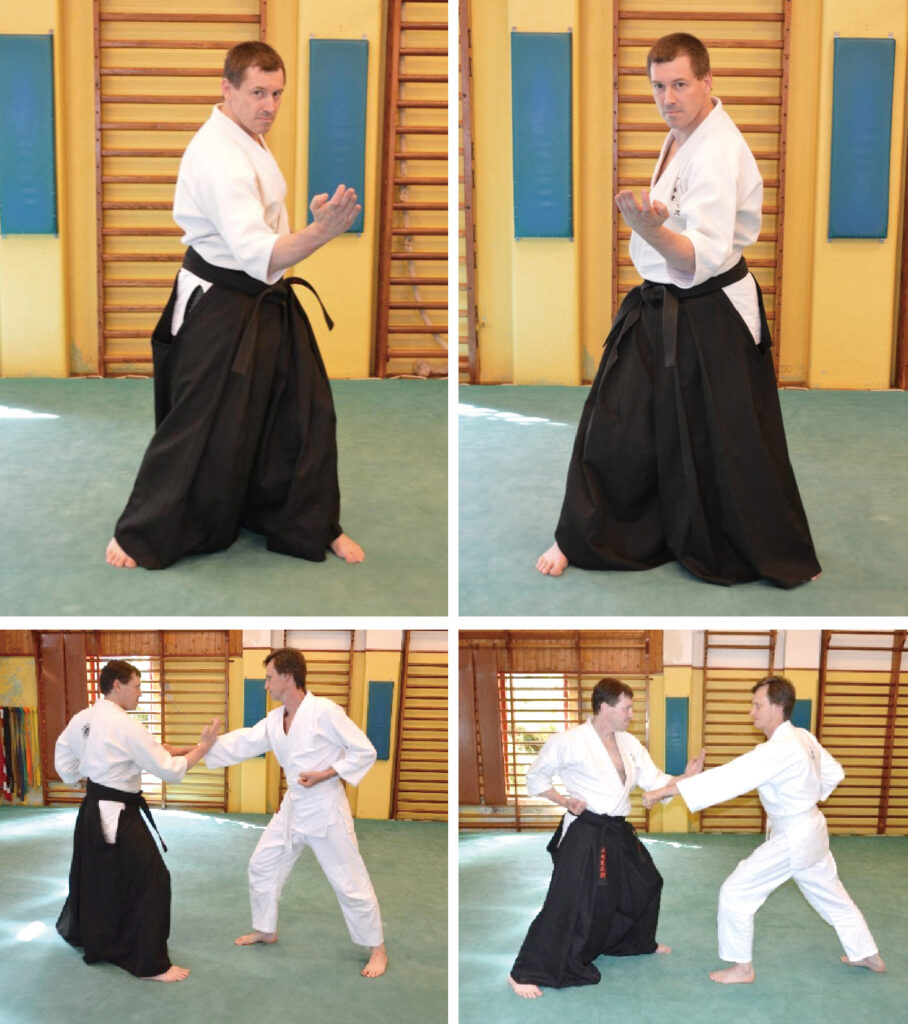
(8) GEDAN HARAI UKE by KAMAE (positioning): SHOMEN TACHI

(9) YOKO JYUJI UKE by KAMAE (positioning): SHOMEN TACHI
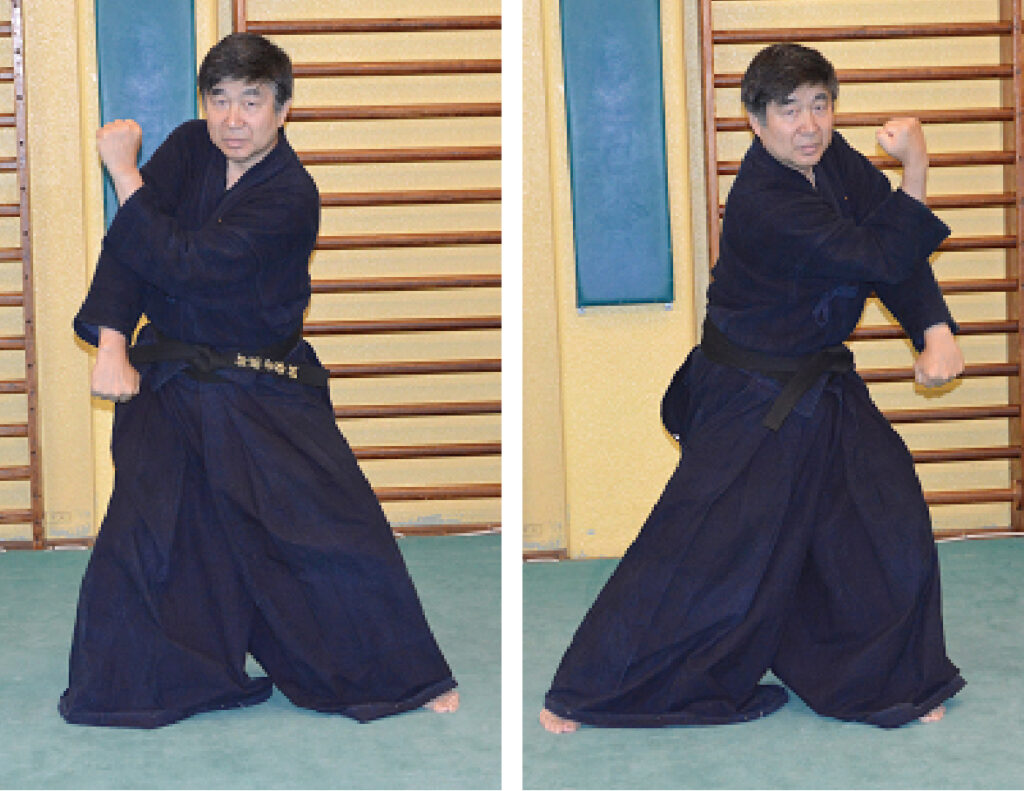
This is used against MAWASHI KERI.
(10) MAE KERI (front kick) by KAMAE (positioning): MIGI HANMI TACHI
(11) MIGI MAWASHI KERI (right round-house or circular kick) by KAMAE (positioning): HIDARI HANMI TACHI
(12) MIGI YOKO KERI (right side kick) by KAMAE (positioning): HIDARI HANMI TACHI
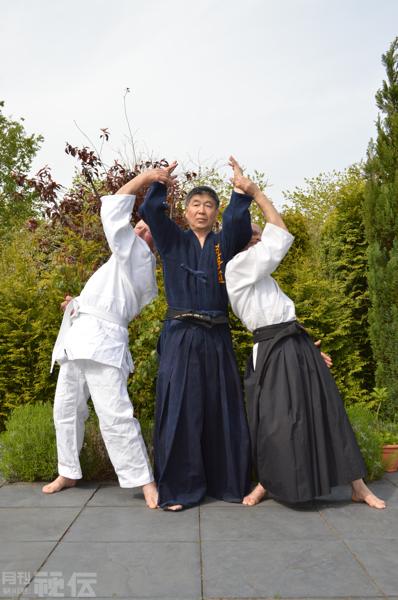
Wrote & supervised by KURABE Makoto SHISEIDO, 2nd Soushi (Grand master) of AIKI Jujutsu Gyakute-do
He was born in 1950 in Kashiwa city Chiba prefecture. Graduated PHD course of Science University of Tokyo. After learning Judo and Shito-ryu Karate-do, started learning Gyakute-do Jujutsu which was created under influence of Hakko-ryu Jujutsu and the other Ko Bujutsu. Since TANAKA Tadashi CHUSHUDO, founder of Gyakute-do, 1st Soushi, passed away and the Ryuha died out without a successor, he had started instructing Gyakute-do seriously to the local Budo fans in the Netherlands so that he can let the name Gyakute-do would not disappear. Besides, during pursuing Gyakute-do, he had discovered the theory of AIKI and had established the methods to realize AIKI and the practicing way in his original way successfully.
Time to time he often writes for the Japanese martial arts journal “Hiden”. So far he has published books “Theory of Vibration Modal Analysis”, “Story of Dutch”, “Fast learning AIKI”, etc., DVDs “How to master AIKI” etc.
Learn AIKI by a Combination of
Videos and Articles!!
» At the starting of AIKI Web Course
with Videos and Free Articles
AIKI Web Course Part 2 24 Lessons
-
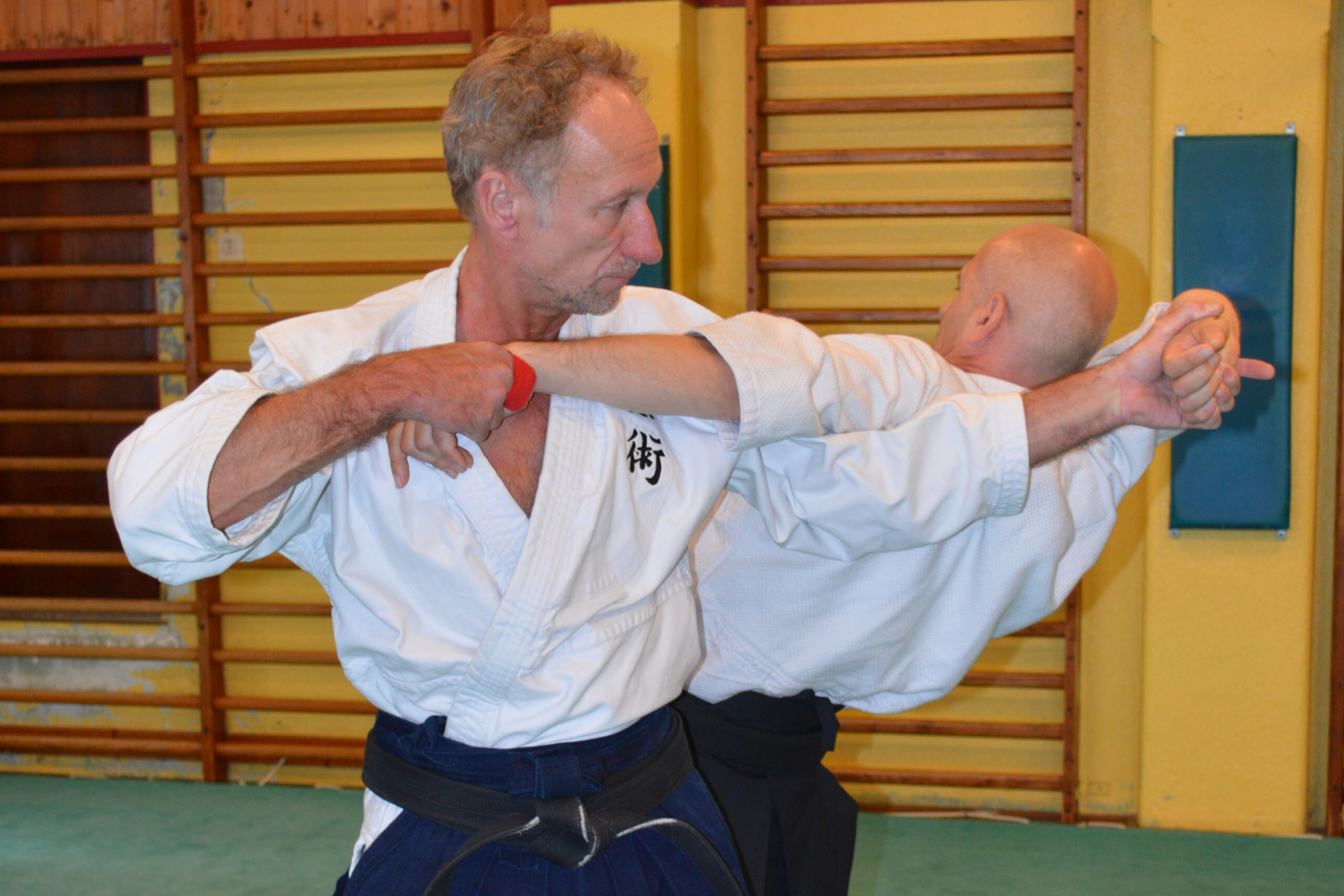
【AIKI JUJUTSU GYAKUTE-DO Series No.5】How you can learn Jujutsu properly
-
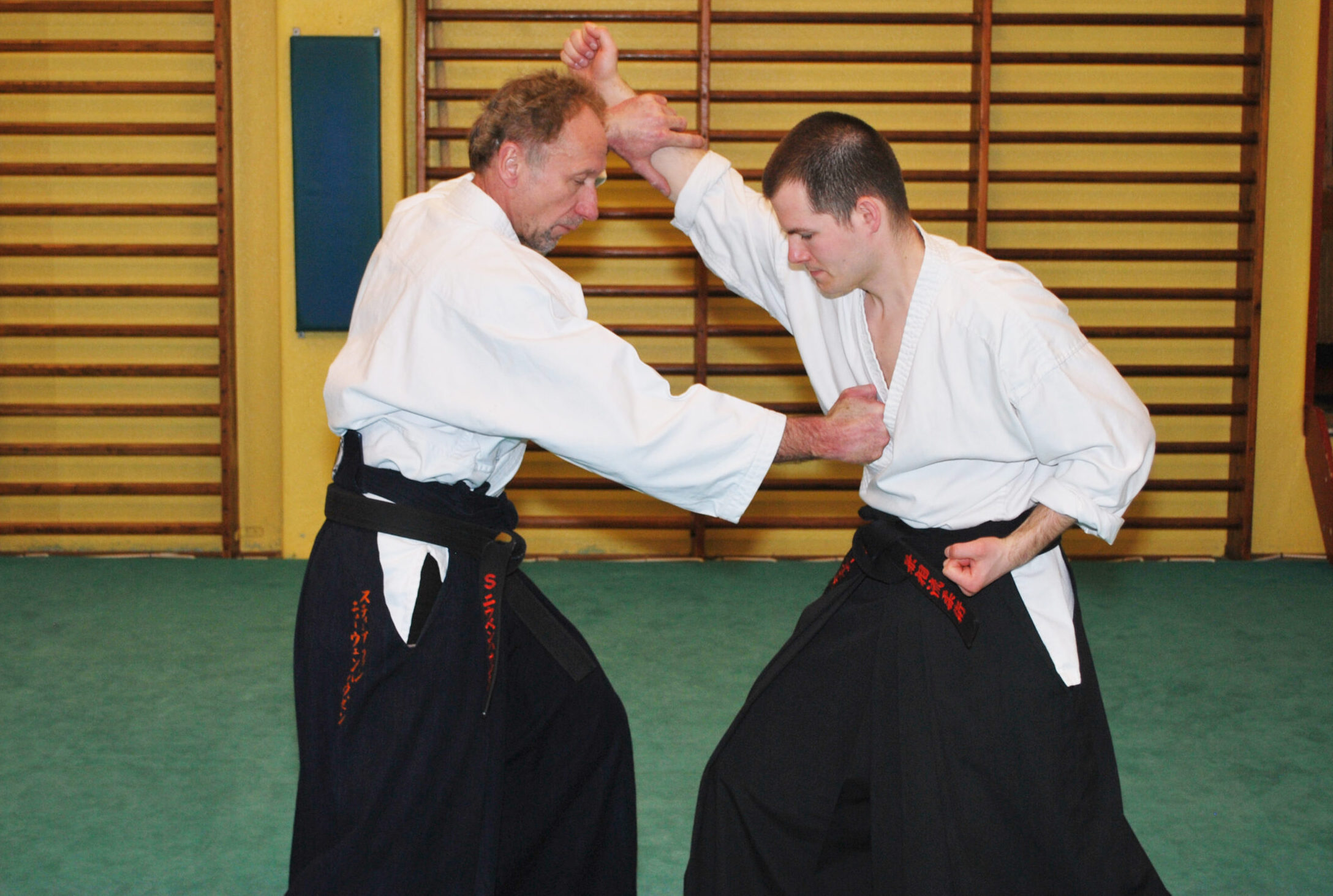
【AIKI JUJUTSU GYAKUTE-DO Series No.4】DAKEN-HO Hit and Kick KATA and AIKI
-
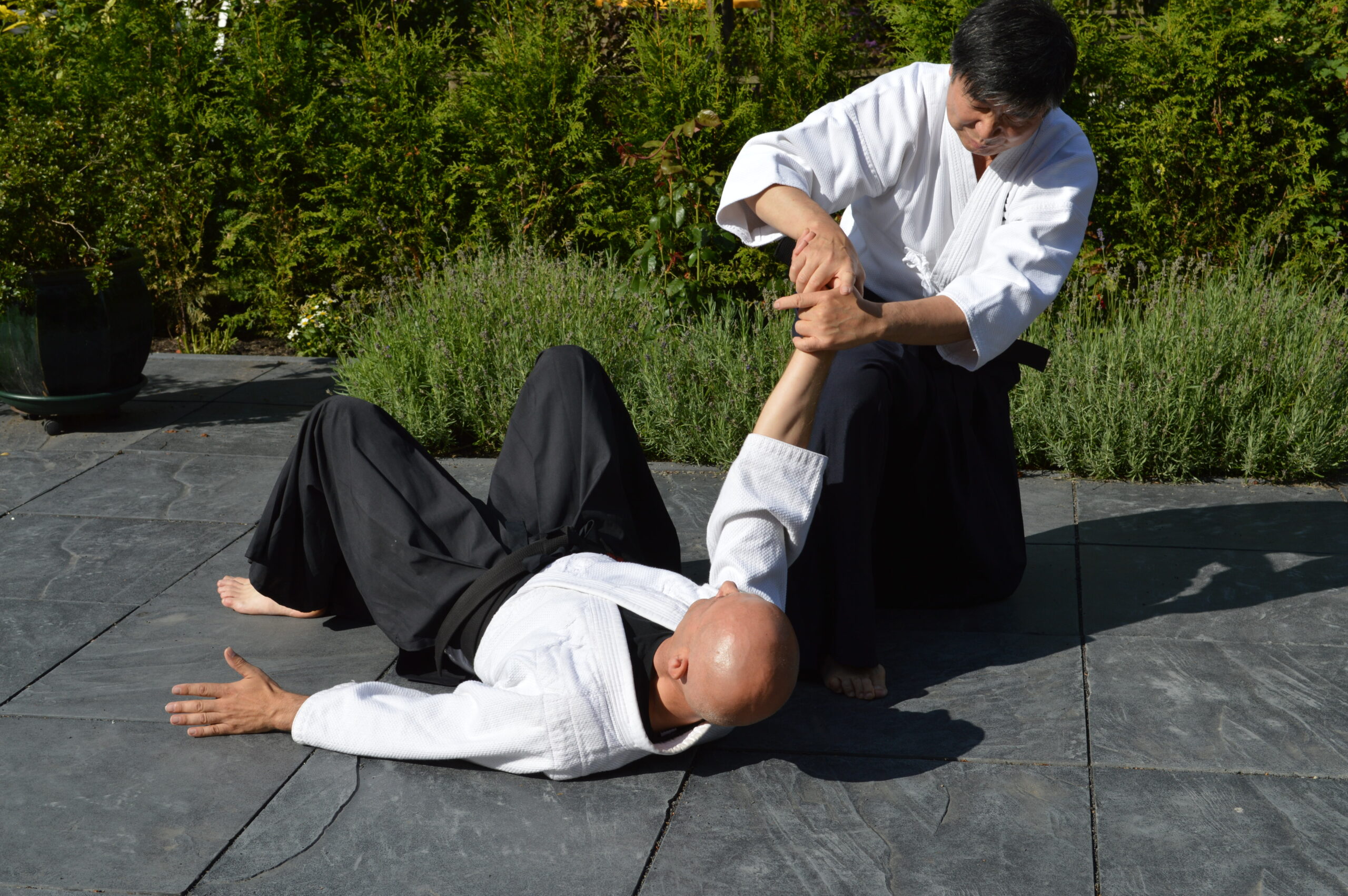
【AIKI JUJUTSU GYAKUTE-DO Series No.3】JUJUTSU WAZA, digest of FUDO
-
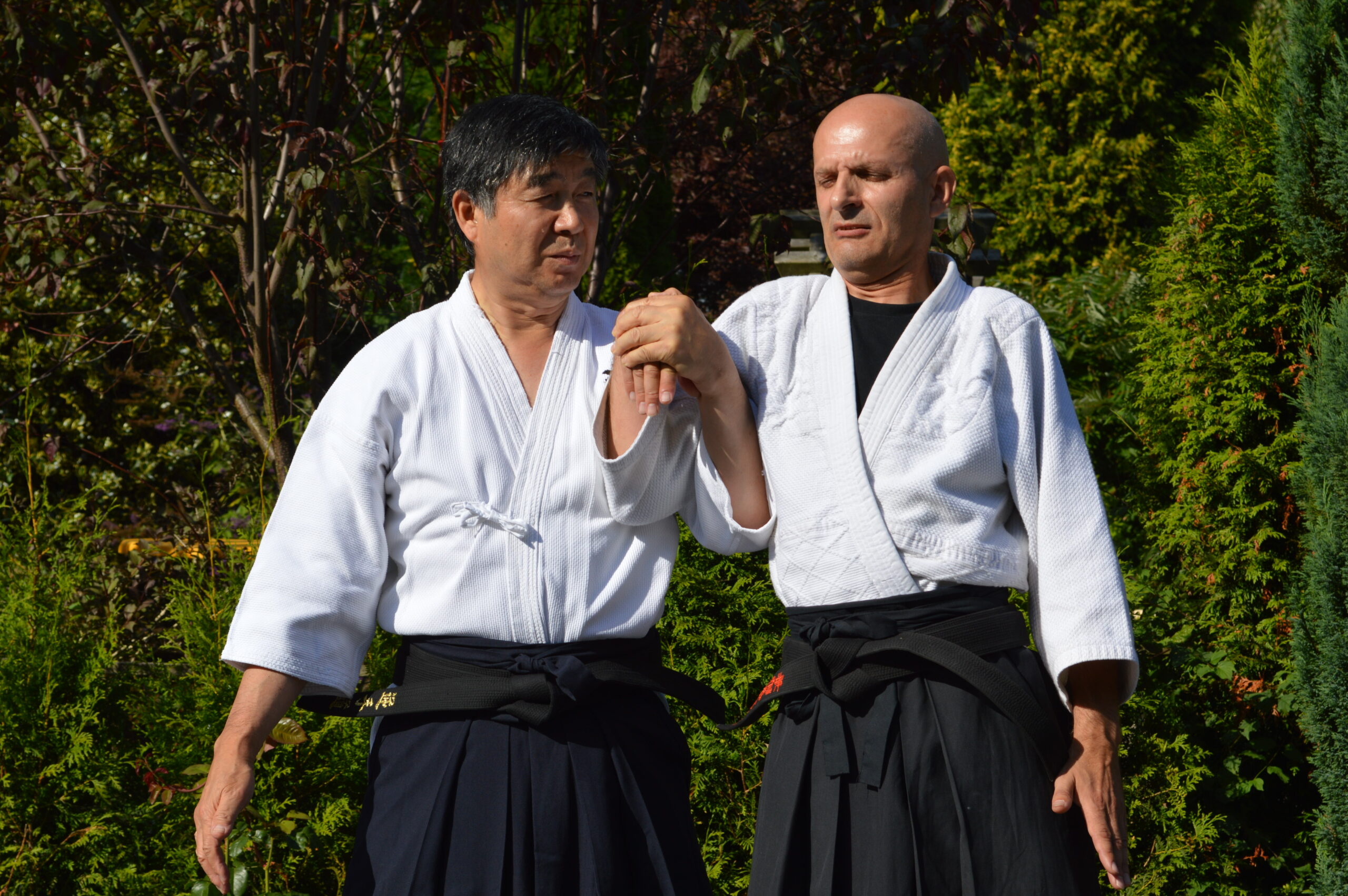
【AIKI JUJUTSU GYAKUTE-DO Series No.2】JUJUTSU WAZA, digest of NUKI, RENKO and NAGE
-

【AIKI JUJUTSU GYAKUTE-DO Series No.1】About GYAKUTE-DO and the digest of its basic techniques
-
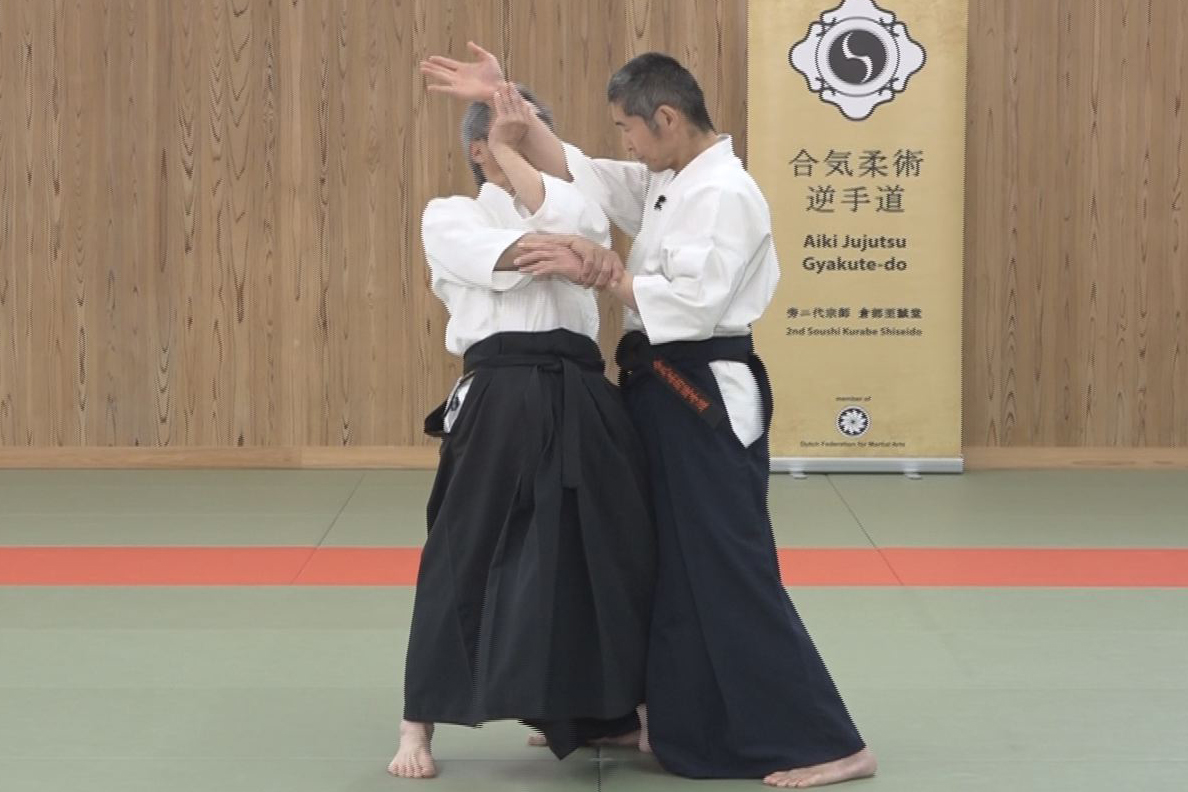
Lesson 24 With Comb. of Different Methods #2
-
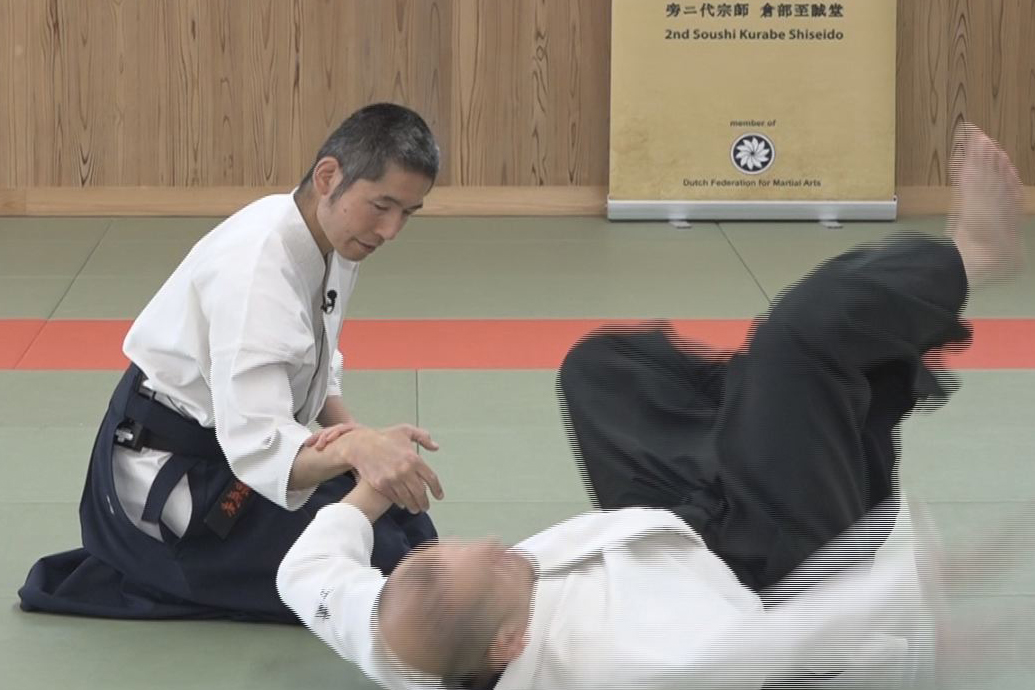
Lesson 23 With Comb. of Different Methods #1
-

Lesson 22 Advanced Tech. using F. E. method #2
-

Lesson 21 Advanced Tech. using F. E. method #1
-

Lesson 20 Advanced tech. using T. F. T. #2
-
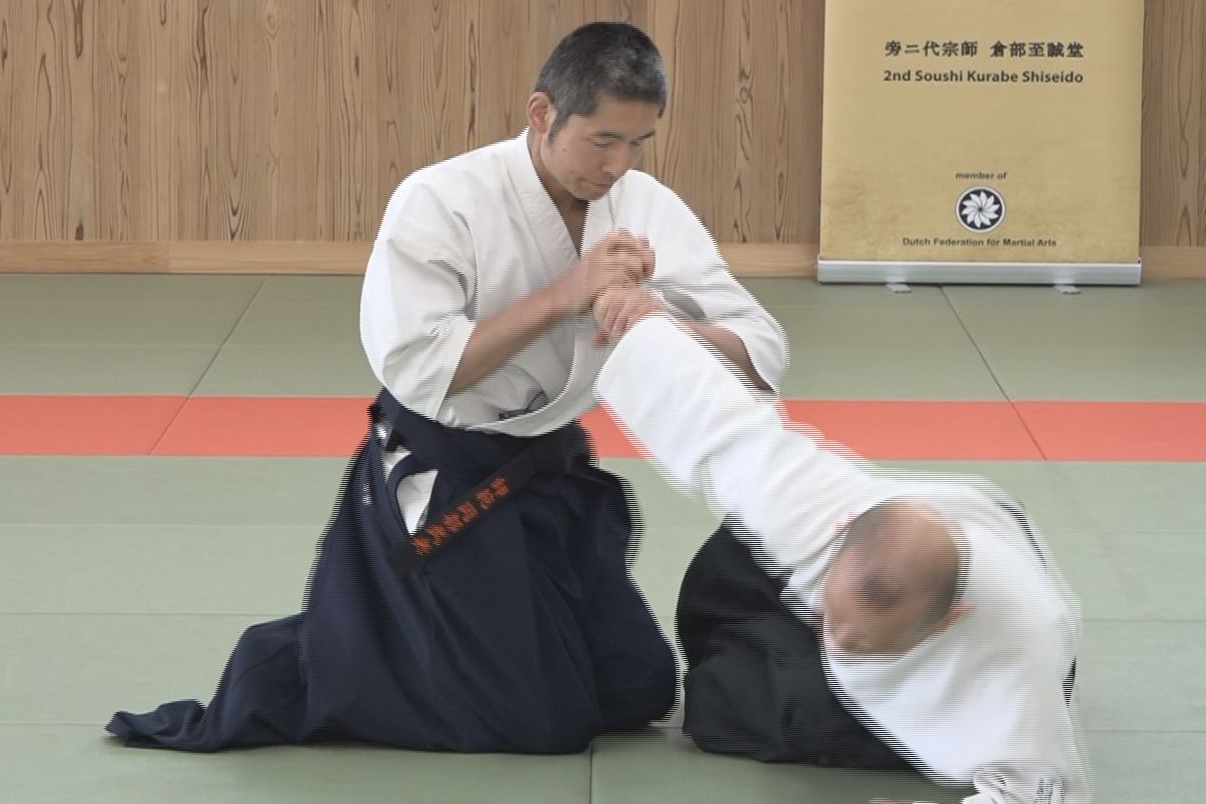
Lesson 19 Advanced tech. using T. F. T. #1
-
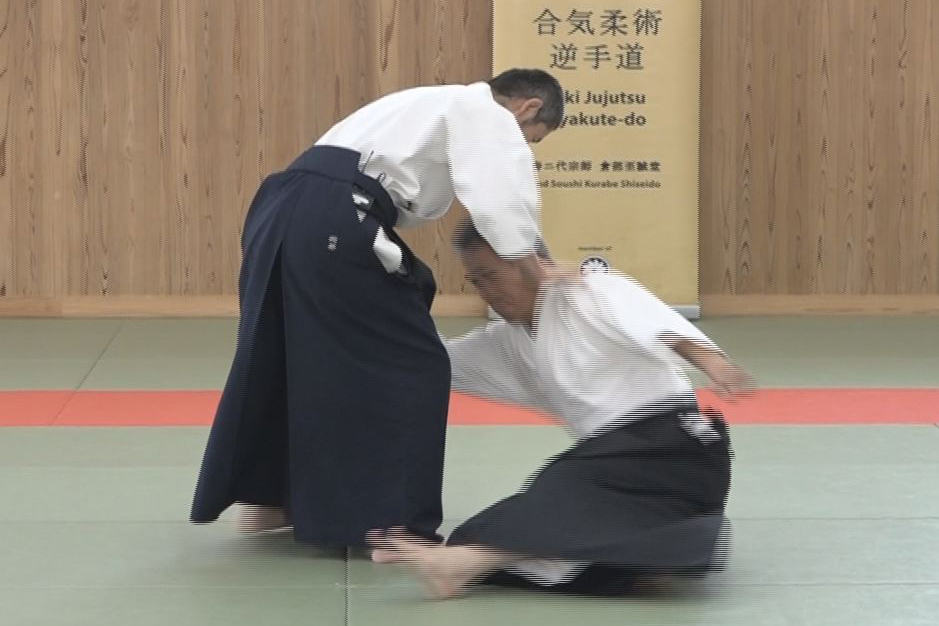
Lesson 18 Advanced tech. using AIKI Contact #2
-
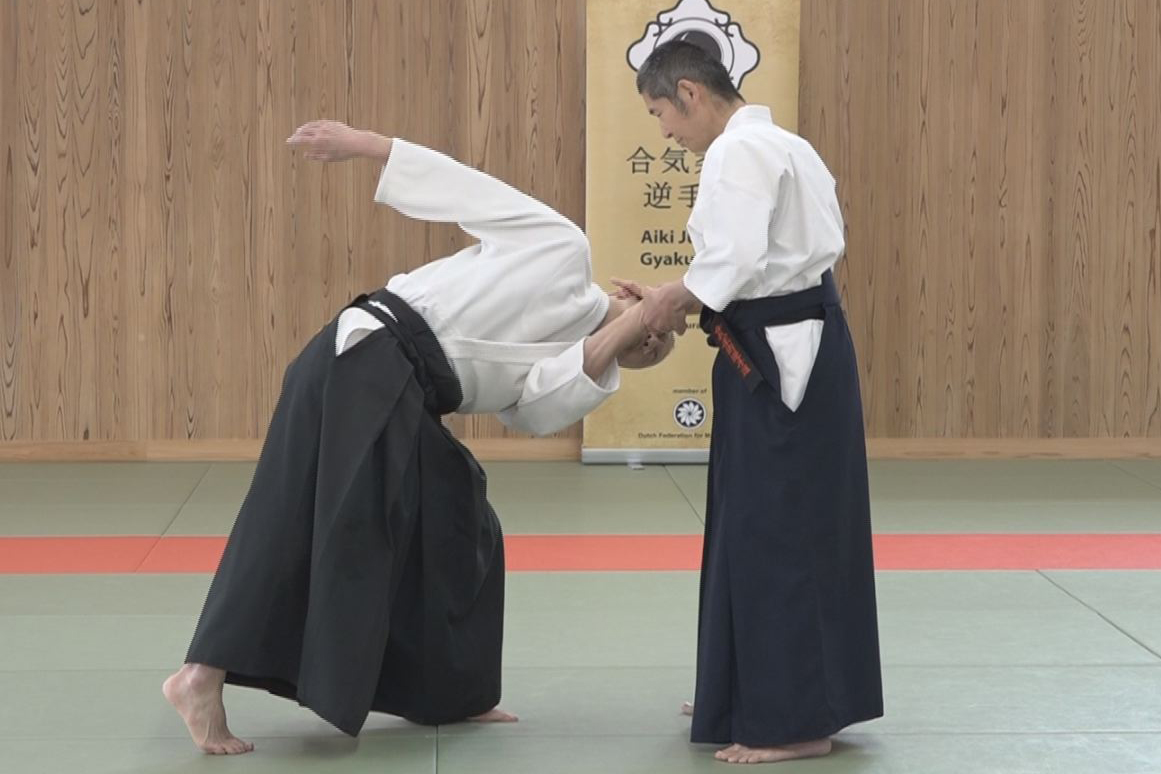
Lesson 17 Advanced tech. using AIKI Contact #1
-
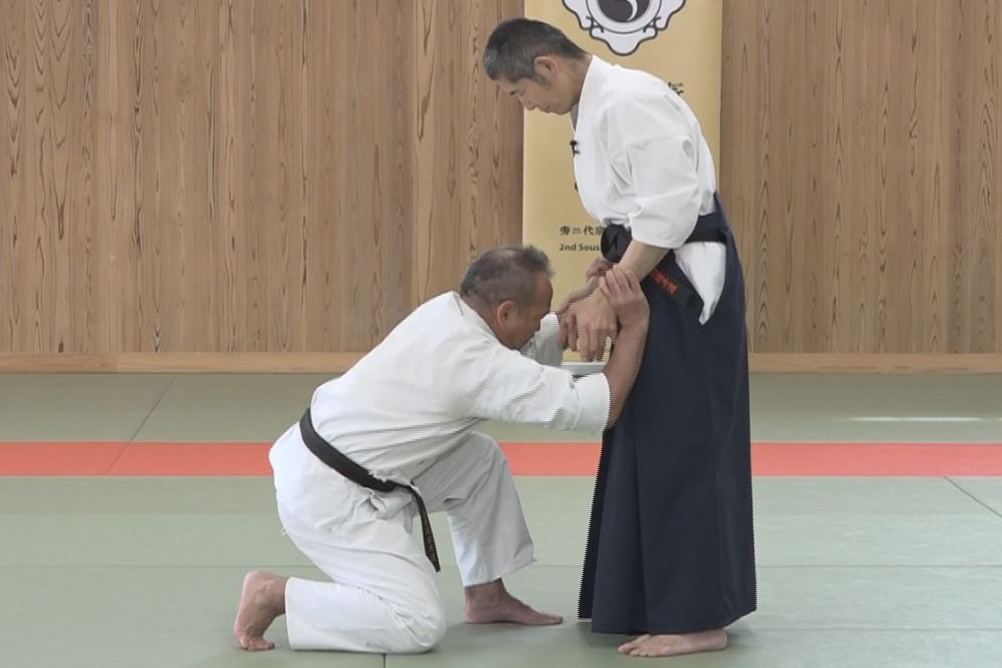
Lesson 16 Advanced tech. by Undetectable F.T. #2
-
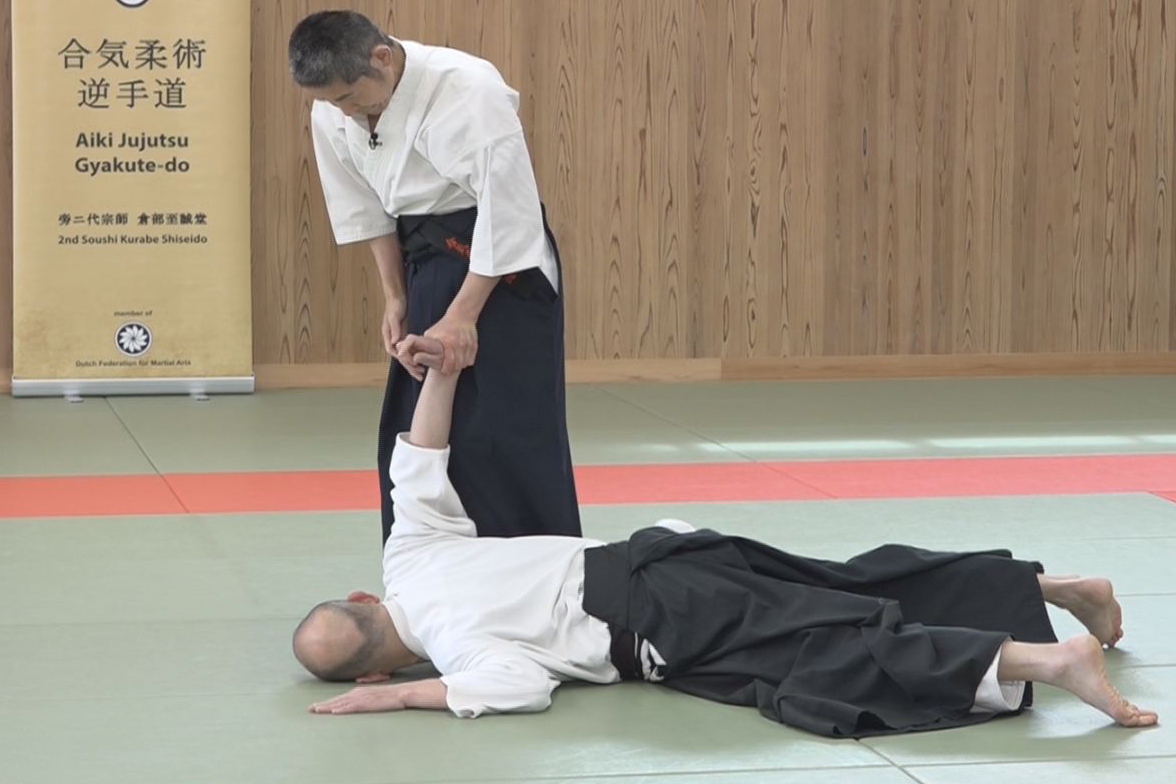
Lesson 15 - Advanced tech. by Undetectable F. T. #1
-

Lesson 14 - Advanced tech. by the Waving method #2
-
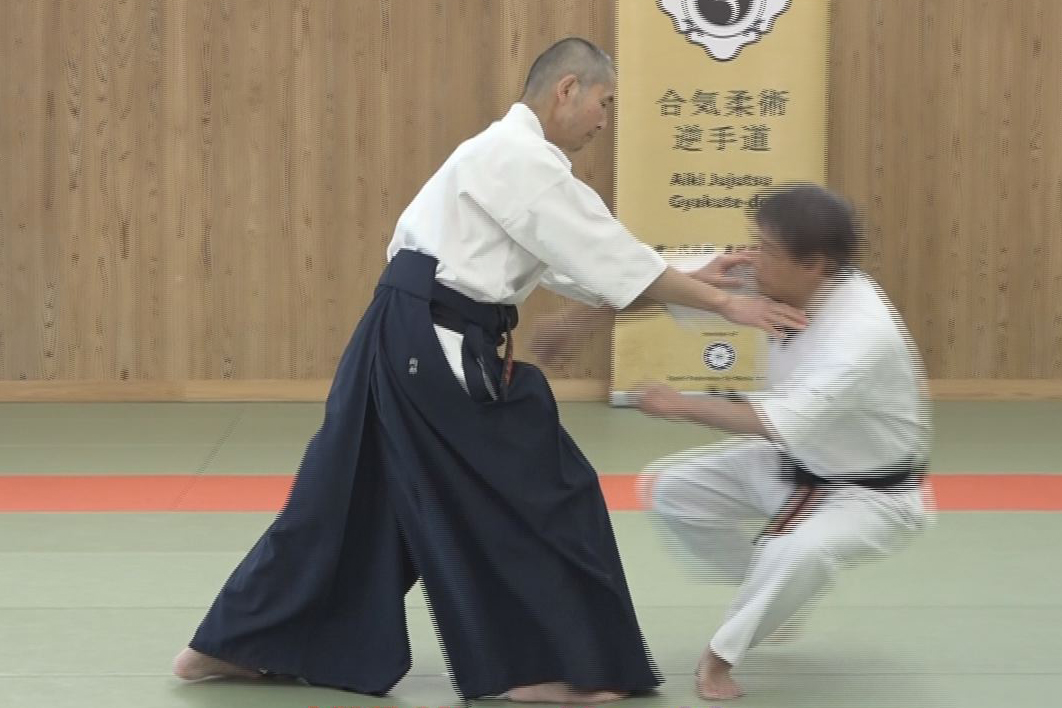
Lesson 13 - Advanced tech. by the Waving method #1
-
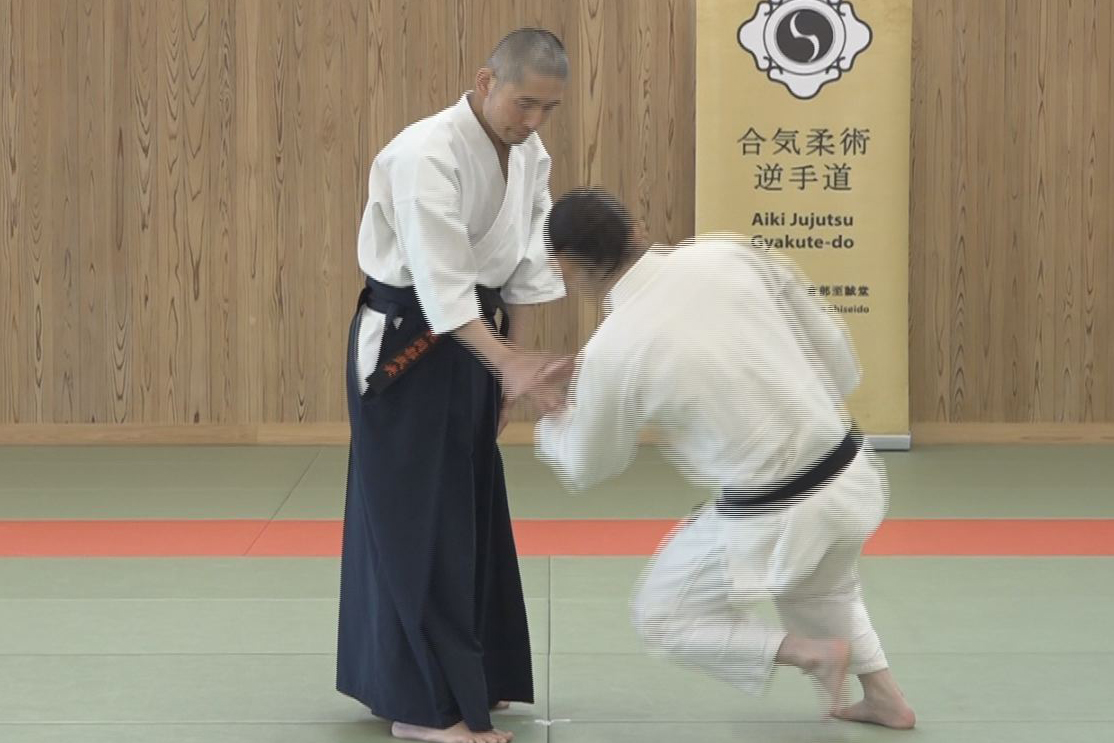
Lesson 12 - Gyaku-te by not Using Force nor AIKI
-
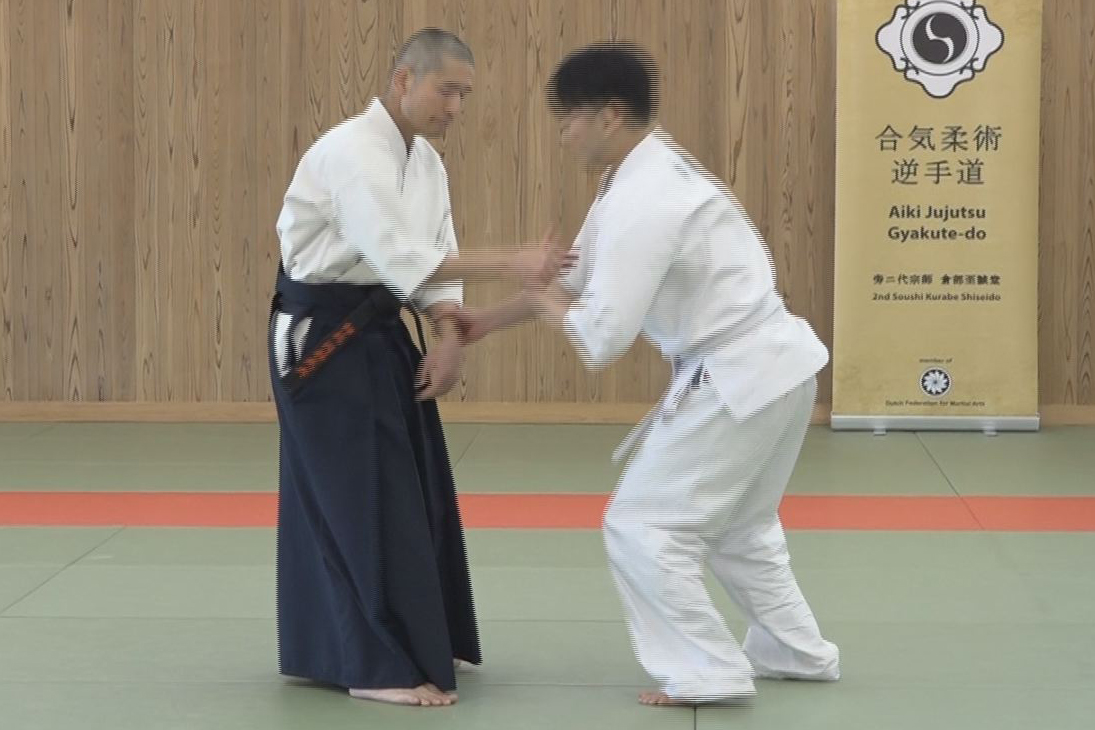
Lesson 11 - Gyaku-te Realized by the AIKI Method
-
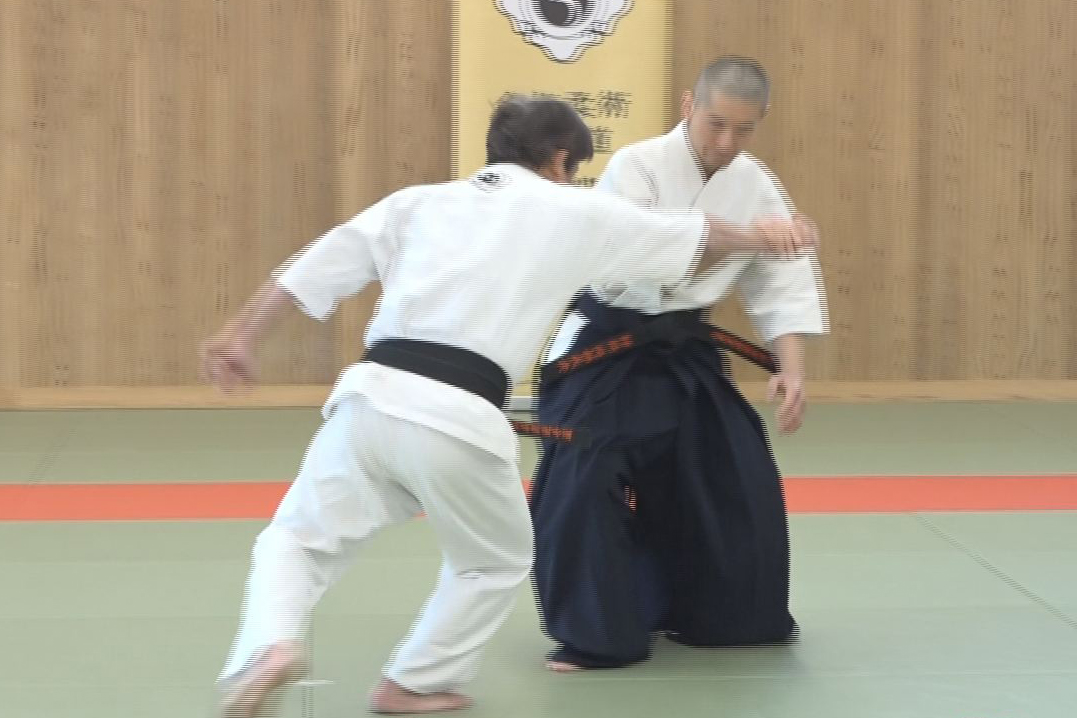
Lesson 10 - Application of Force Equilibrium method
-
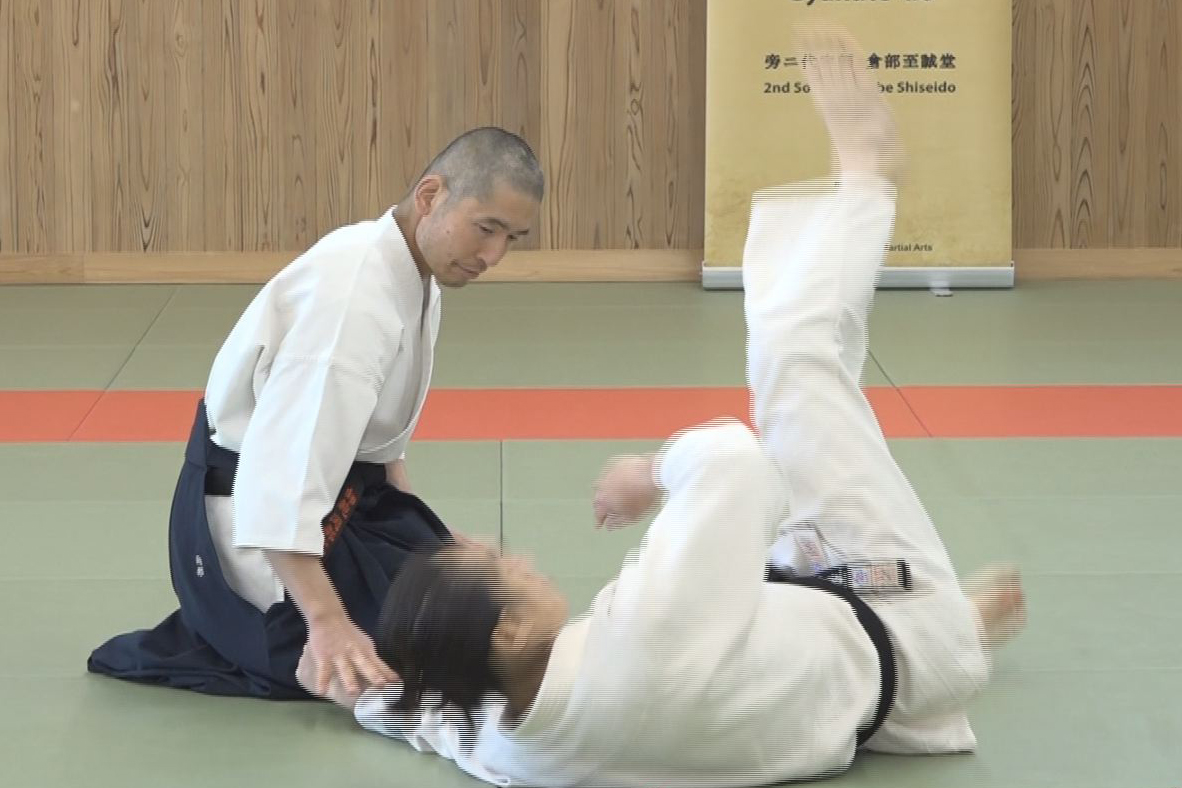
Lesson 9 - Force Equilibrium
-
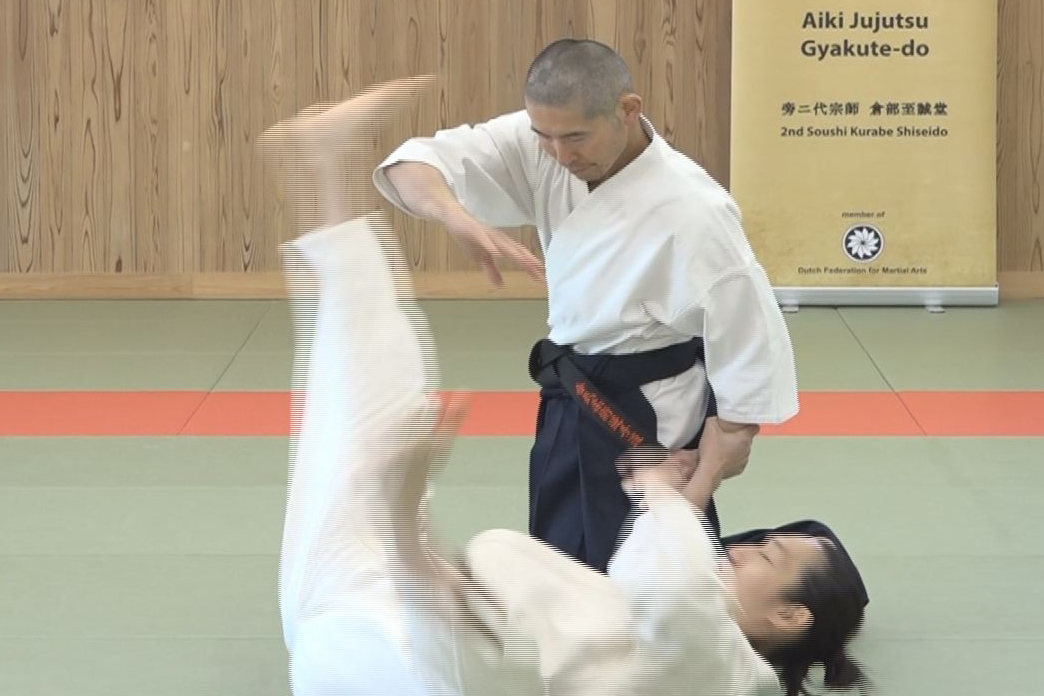
Lesson 8 - Application of Targeted Force Transfer
-
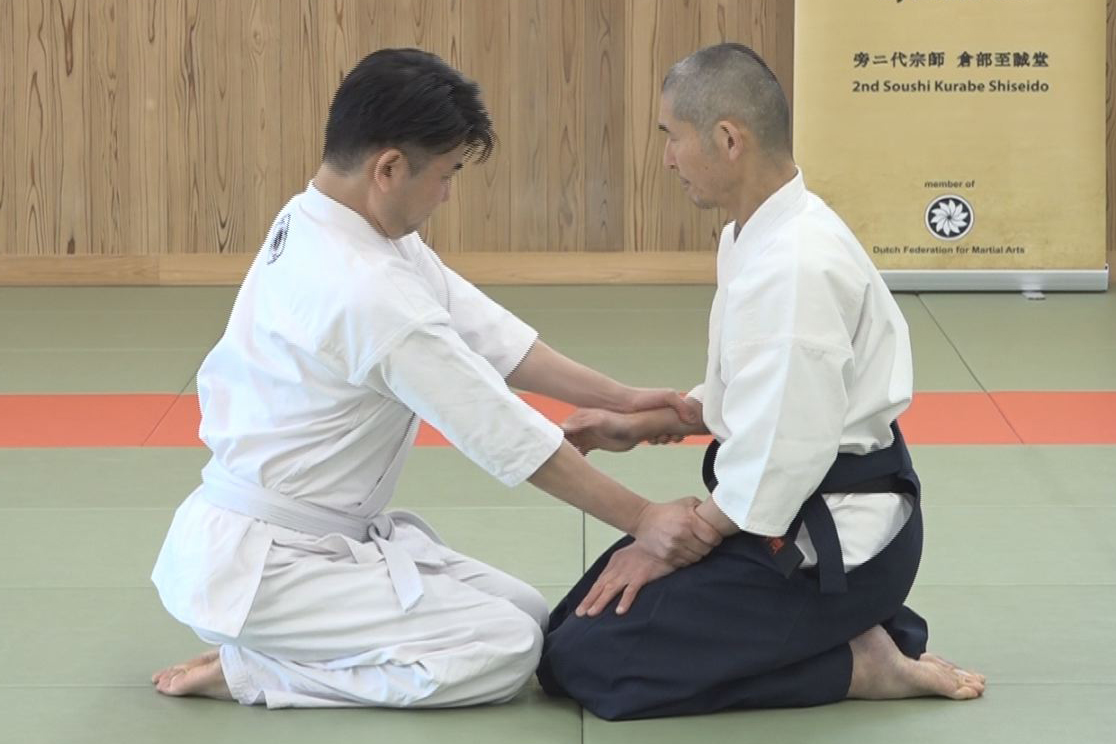
Lesson 7 - Targeted Force Transfer
-

Lesson 6 - Application of AIKI Connection
-
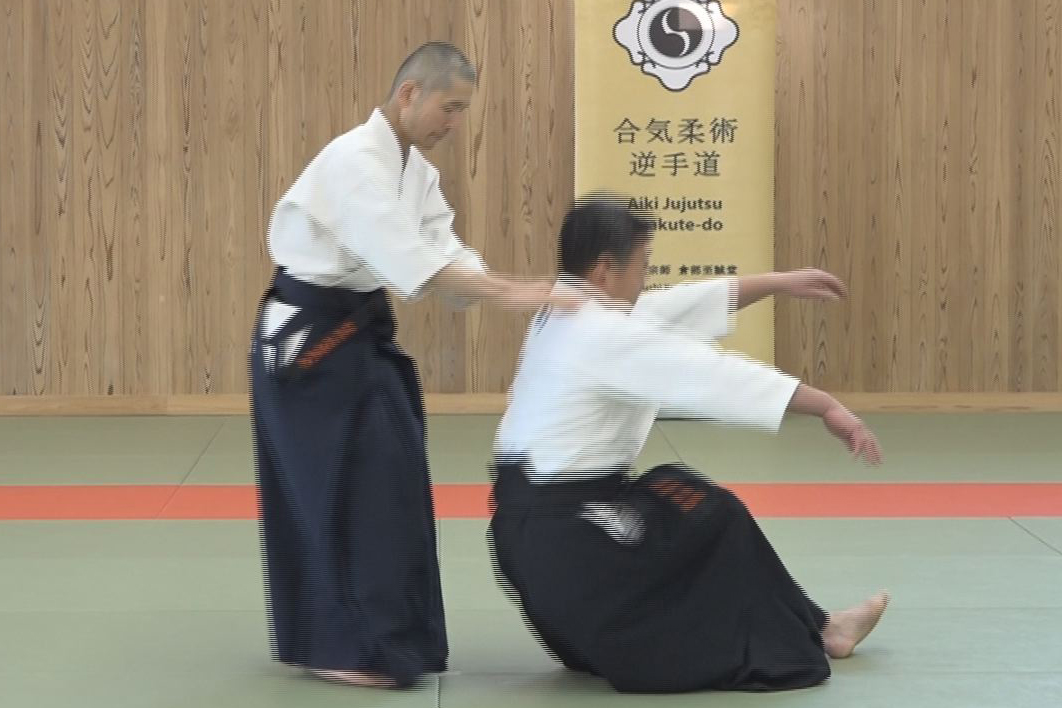
Lesson 5 - AIKI Connection
-

Lesson 4 - Application of Nondetectable Force Transfer
-
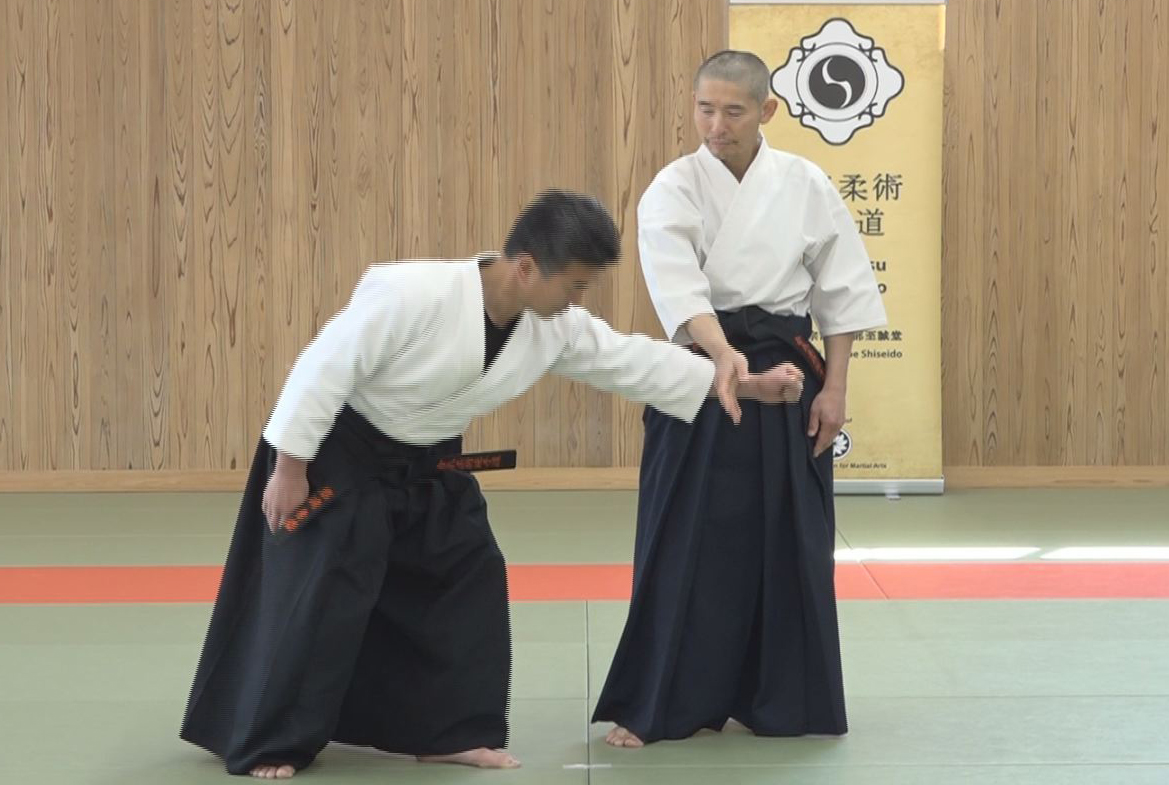
Lesson 3 - Explanation of Undetectable Force Transfer
-
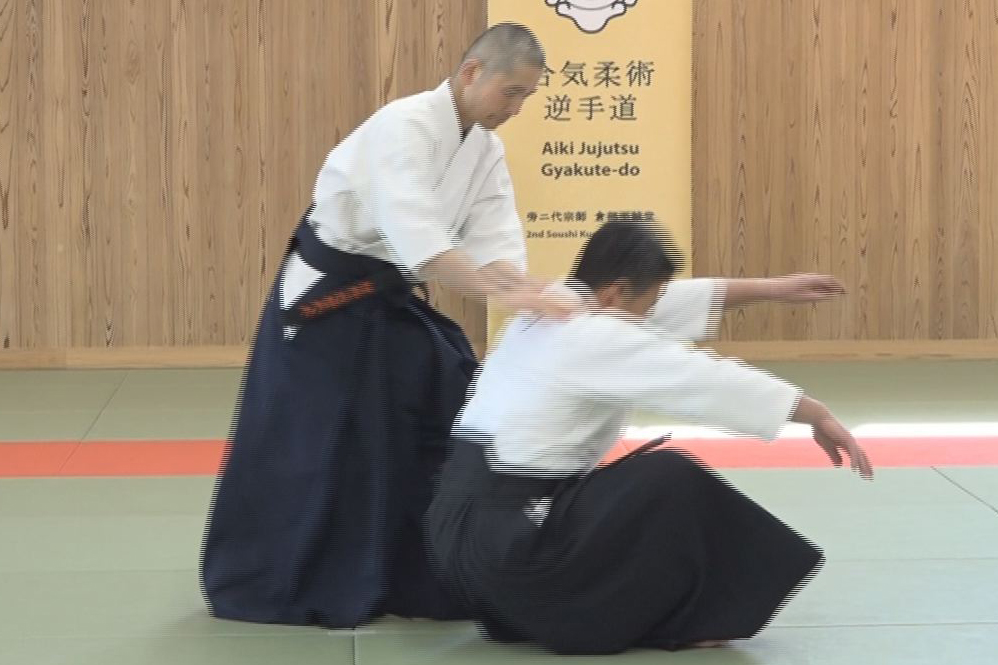
Lesson 2 - Application of Waving Method
-

Lesson 1 - The Explanation of Waving Method
-
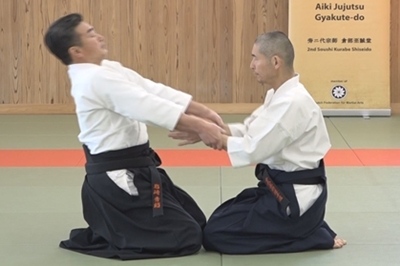
Introduction with video
and Knowledge of AIKI


